Cupra showcased its rebellious ambitions at IAA Mobility with the new Tindaya concept
A rebel with a cause, Spanish manufacturer Cupra wants to bridge the worlds of car design and lifestyle accessories, with a host of creative collaborations and the striking Tindaya concept
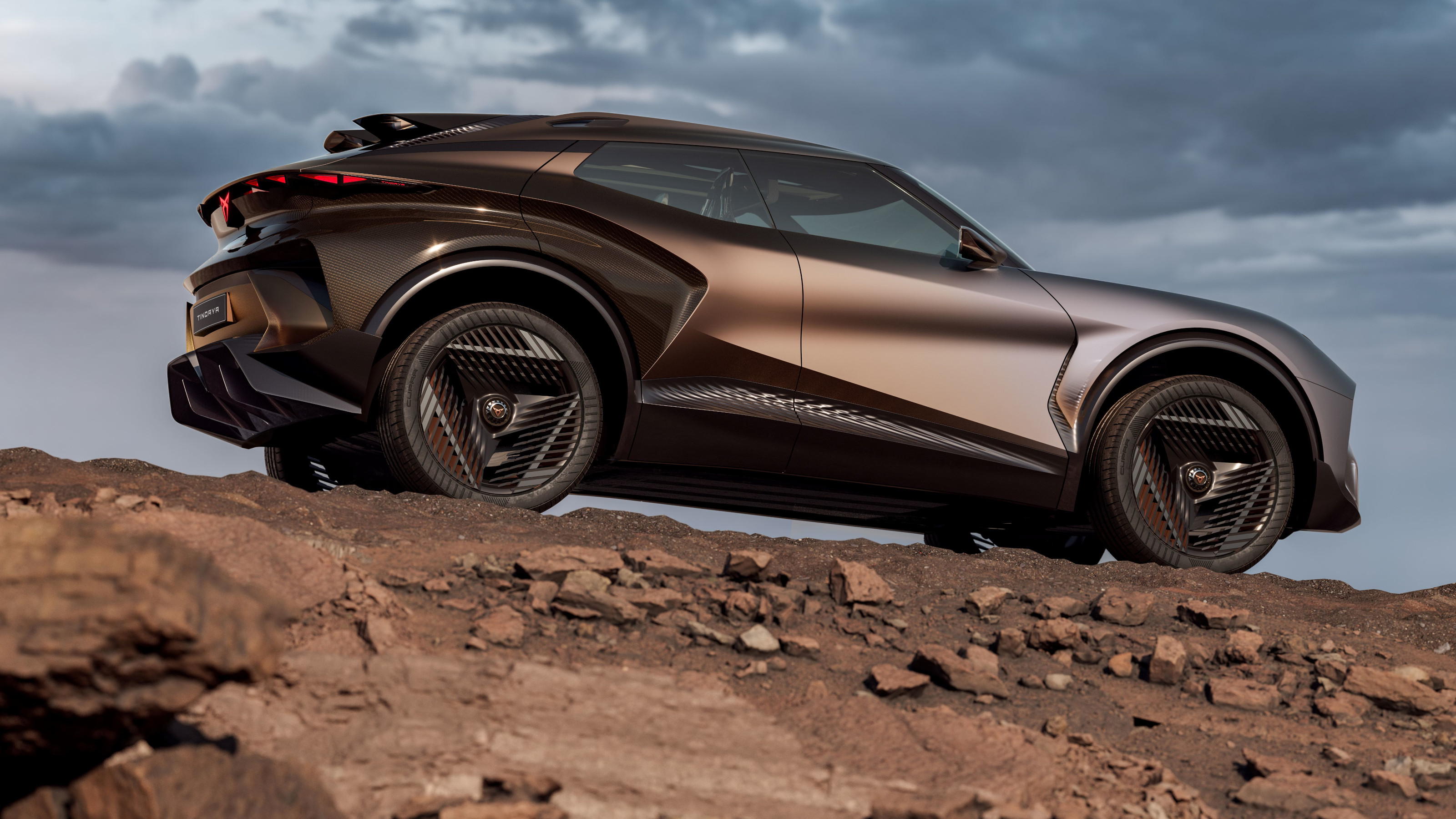
How far should a car brand go? That’s the question that underpins the strategy adopted by Cupra, the VW Group’s wayward, edgy Spanish brand. Once a sub-brand of Seat, the car-maker struck out on its own, setting itself up as the most emotional EV brand available, with premium positioning and an emphasis on driving and deliberately polarising design.
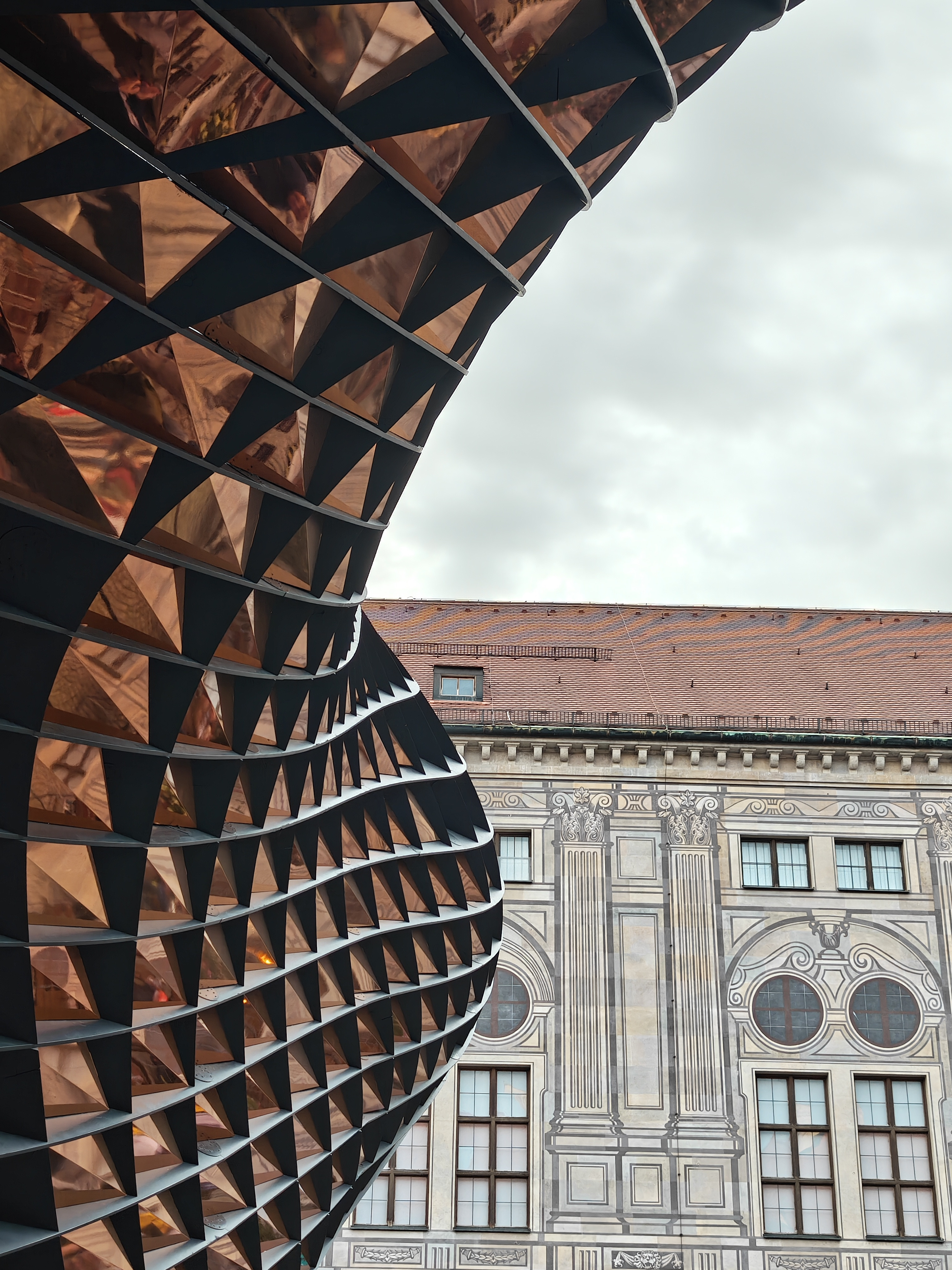
Cupra's pavilion at IAA Mobility 2025
At the IAA Mobility 2025 show in Munich, Cupra made a big splash. Building on the House of Cupra narrative it launched at this year’s Milan Design Week, the brand showed off its new luggage range developed with Harper Collective, the 3D-printed shoes created in partnership with Zellerfeld, as well as a new fizzy drink and even a Cupra scent.
All this activity underscored the brand’s ambition to go ‘Beyond Automotive’, yet at the same time it is explicitly aligning itself with those who wish to drive themselves and have no truck with the anodyne experience of many EVs, let alone the apparent rise of autonomous systems.
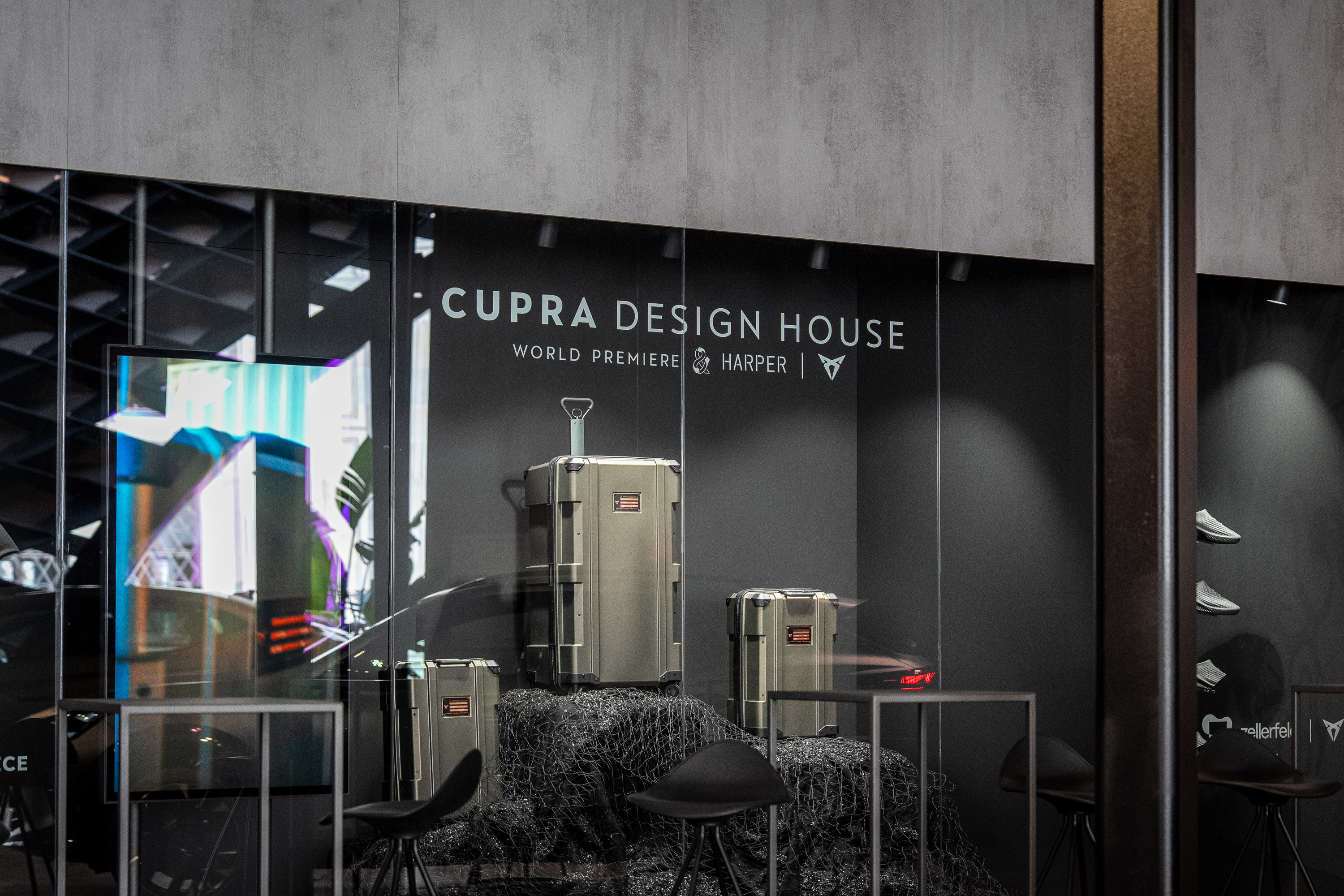
Cupra's collaboration with Harper Collective
To this end, Cupra’s brand film states baldly, ‘No Drivers, No Cupra’, with a ponderously intoned list of other fine things that would be banished from modern life if such a binary approach were taken.
Joining the merch was a new concept, the Cupra Tindaya, the company’s largest car to date, with a range-extender powertrain (not an EV or plug-in hybrid) and a strong signifier of future intentions. These include a stated desire to enter the Middle East market, joining the 50-plus countries in which Cupra already has a presence.
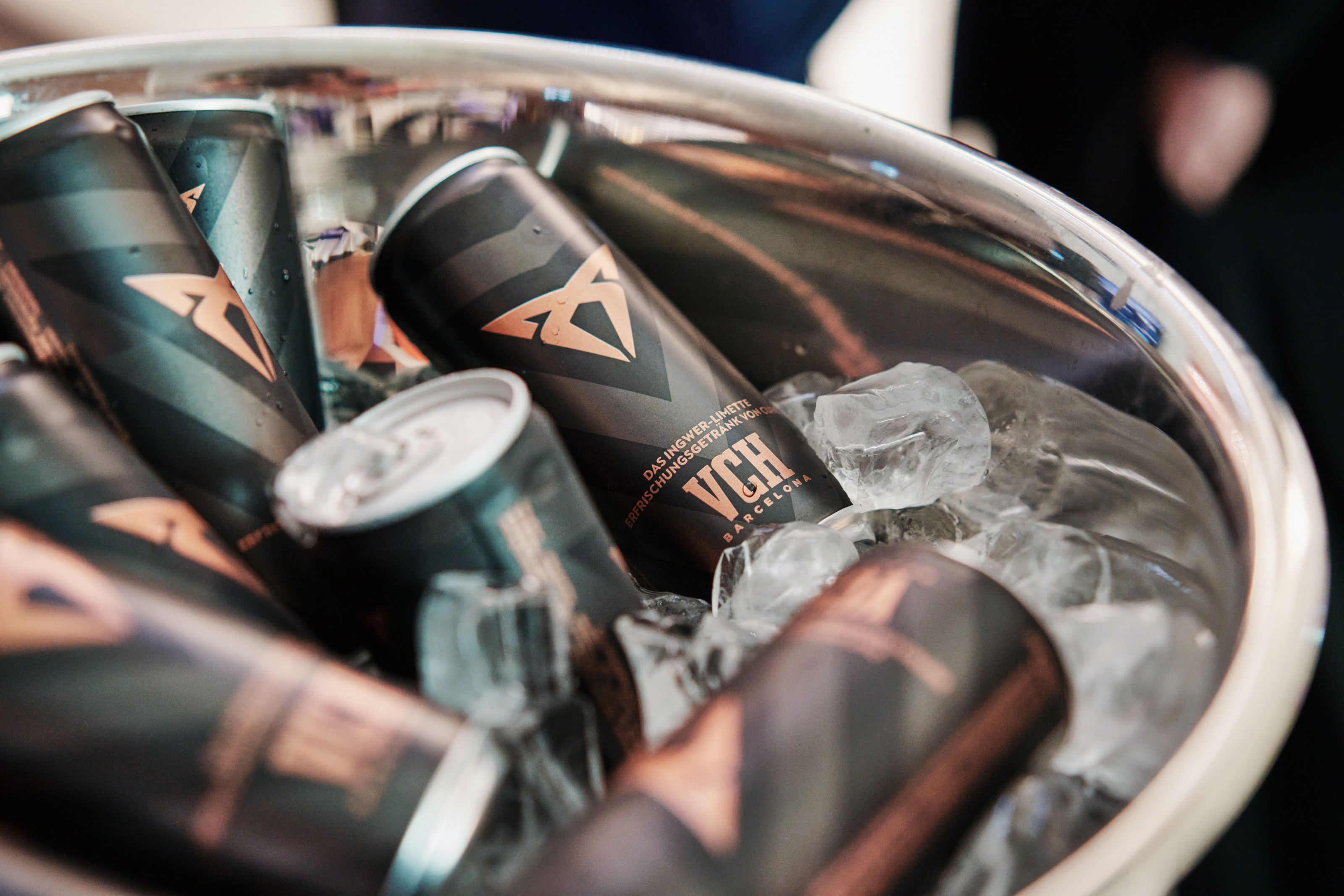
Can do: Cupra's new drink, developed with Vichy Catalan
In amongst all the moodily lit geology, neon-tinged graphics, and whizzy animations, the film is basically Cupra making a stab, like many before it, at this generation’s equivalent of the Apple ‘1984’ or Guinness ‘Surfer’ commercials, a little bit avant-garde, a little bit iconoclastic. For the most part, the reality is a little more prosaic.
Cars like the Formentor and Born are perfectly serviceable examples of mainstream gothic, with moody colours and materials and lighting and bodywork that slides and sweeps around provocatively to distinguish itself from the more prosaic iterations of the same platform presented by its VW Group siblings.
Receive our daily digest of inspiration, escapism and design stories from around the world direct to your inbox.
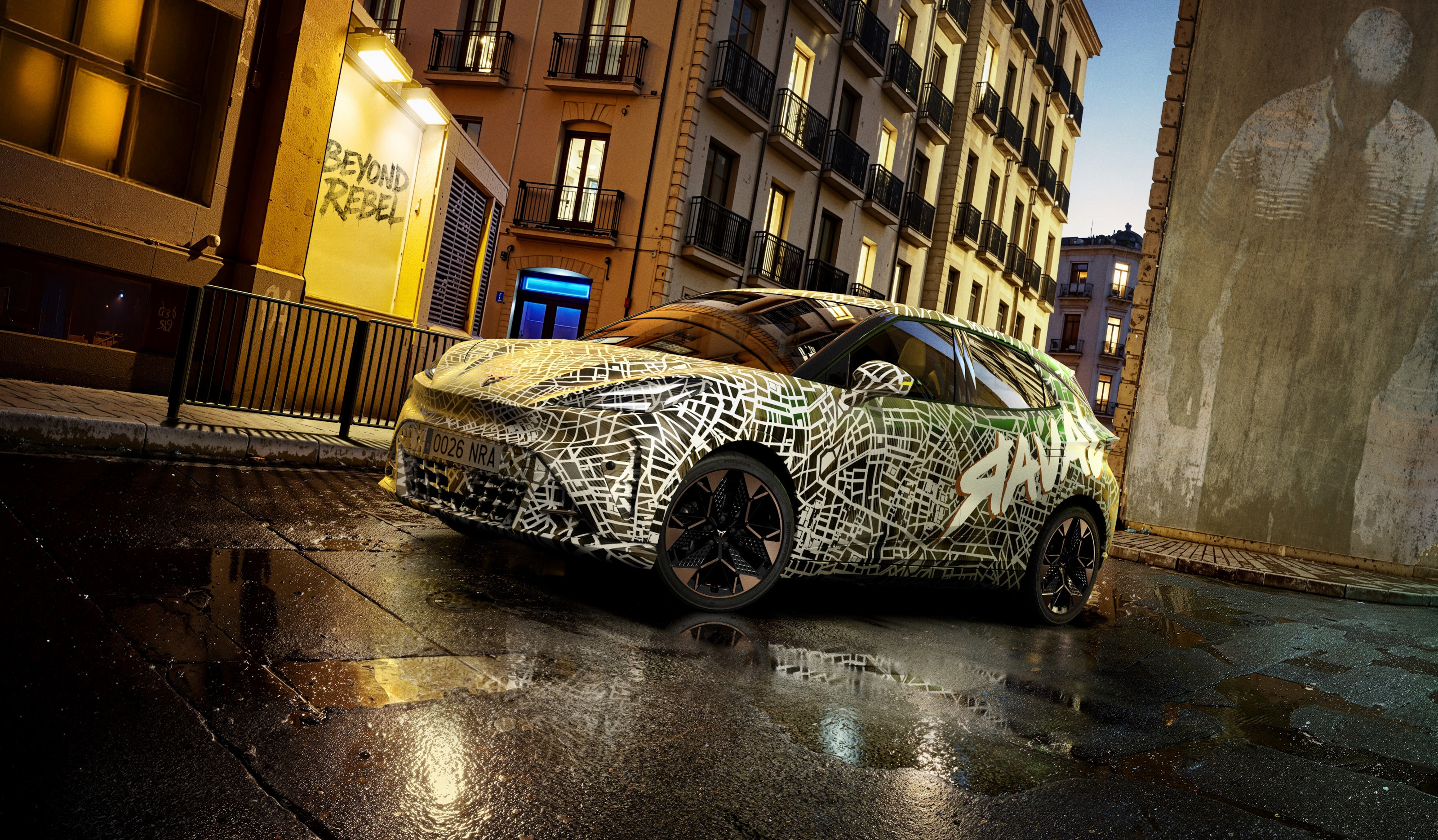
The forthcoming 2026 Cupra Raval, with Barcelona-inspired camouflage
Cecilia Taieb, Cupra's global head of communications, is front and centre of these moves. A dynamic presence who operates in the heart of the company, Taieb is adamant that Cupra’s collaborations are not about winning friends, but about ensuring the Cupra vibe is distinctive to all. ‘Take the drink,’ she says of the fizzy concoction of ginger and lime developed with Vichy Catalan, ‘you either love it or you hate it – it’s very polarising, like our cars.’
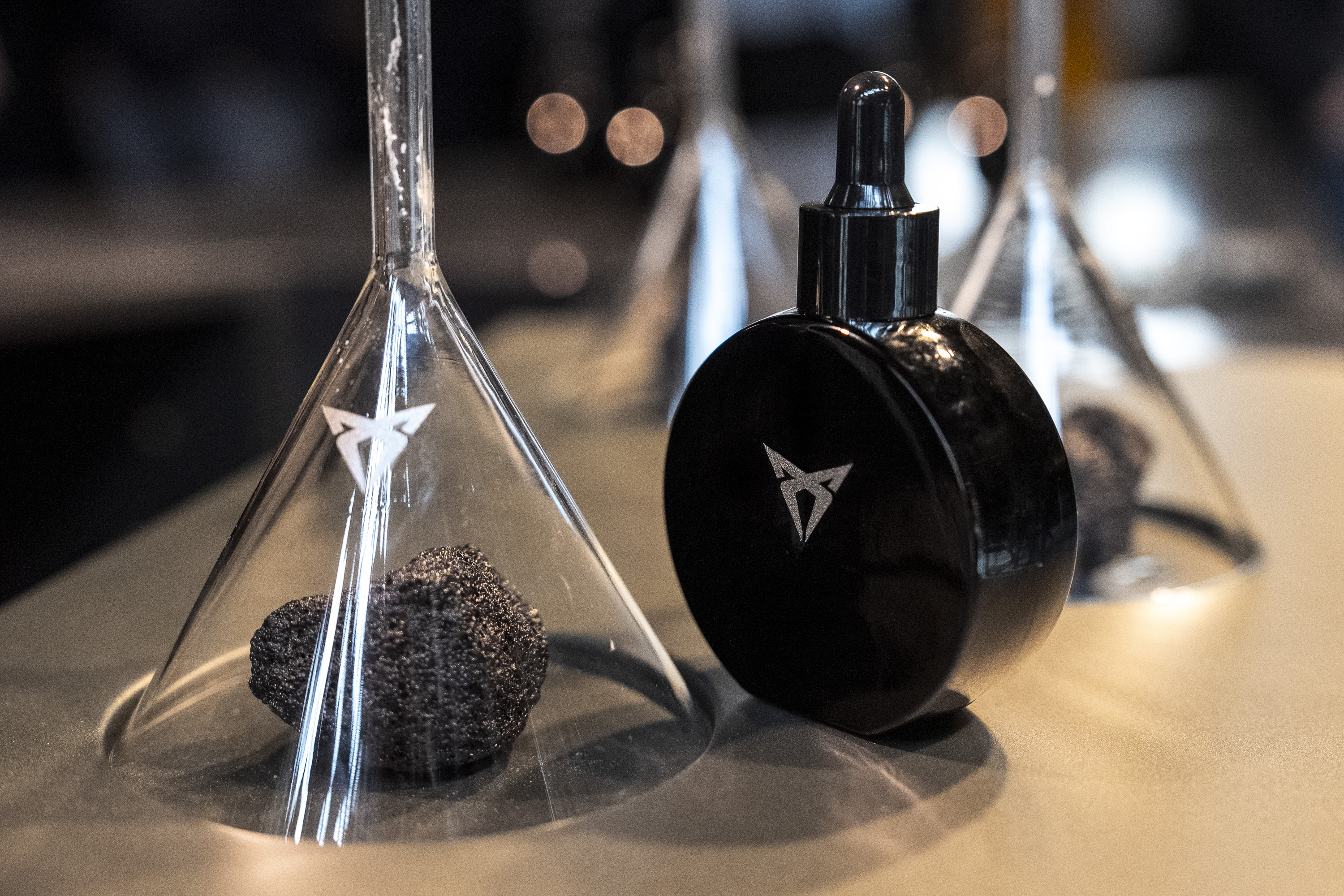
Smell of success? The new bespoke Cupra scent
There’s also a new Cupra scent, created with the help of the Fundación Ernesto Ventós and Lucta, a fragrance specialist, both based in Barcelona just a short distance from Cupra’s HQ. ‘We’re an emotional brand,’ Taieb says, ‘so we use all the senses.’ Designed to be deployed in Cupra retail environments and the cars themselves, the scent aligns itself with the Cupra vision – not avant-garde, exactly, but self-consciously apart from the mainstream.
All tie-ins need to be linked to the cars. ‘They are our essence,’ Taieb confirms, ‘but the most important thing for a brand is have a personality.’ When discussing the ‘Cupra Tribe’, a term for owners, fans and admirers of this approach, Taieb notes that ‘many people in it don’t even have a driving licence – they are our new generation.’ She reiterates the two values that Cupra strives to foreground, regardless of whether it’s cars, clothing, suitcases or more. ‘Design and performance are our two big things – you have to be attracted to one or the other.’
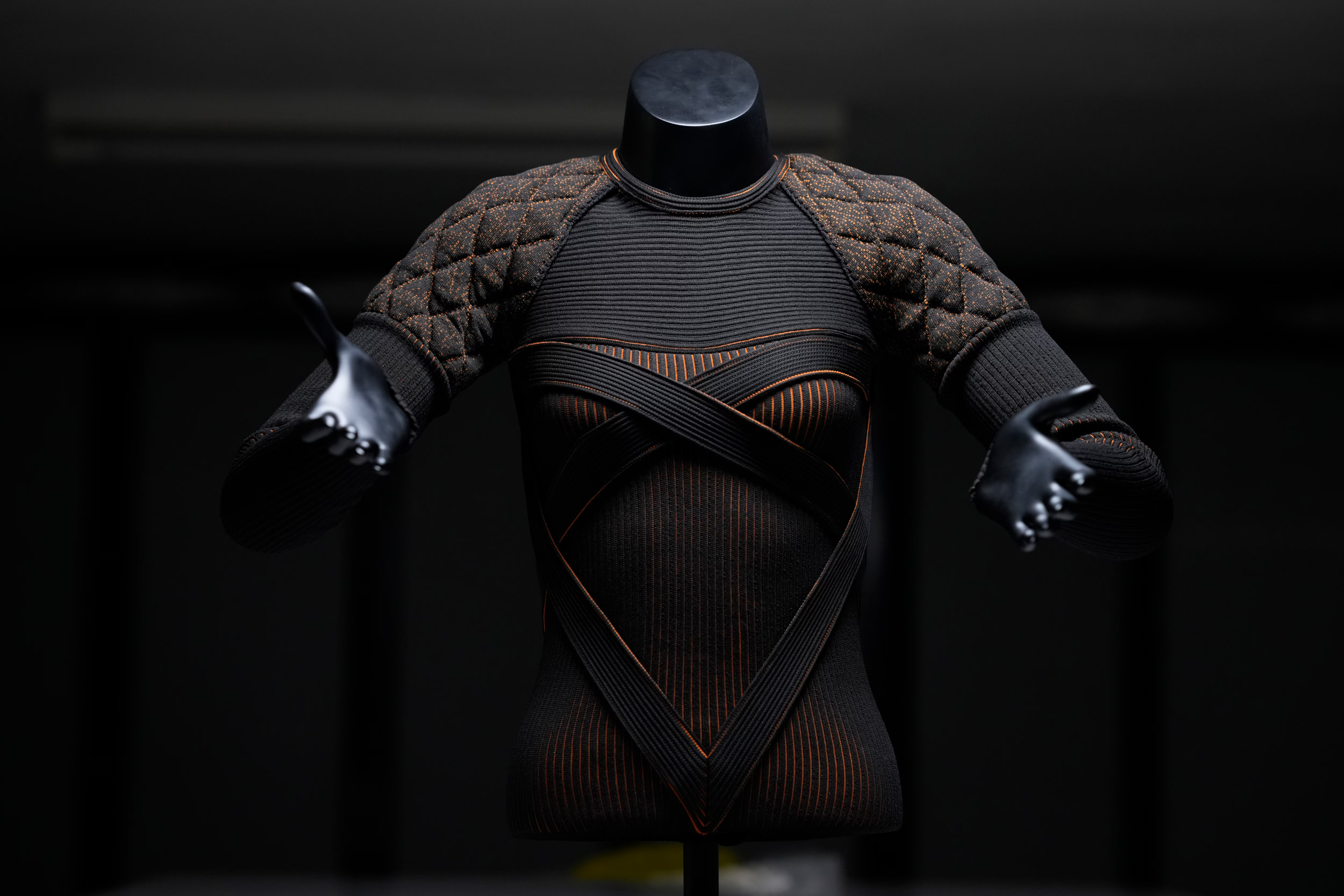
A prototype garment created using Cupra's adaptive knitting process
Taieb is also emphatic that there isn’t a ‘Cupra version’ of everything. ‘It’s when it feels right’, she confirms. Introduced to the team behind Harper Collective luggage by none other than erstwhile Wallpaper* editor Tony Chambers, she knew instantly there was a synergy. ‘Their design and values are coherent to us,’ she says, ‘they’re not a huge brand, they take plastic from the sea and turn it into suitcases.’ Adding that ‘everything in the collection needs to tell a story and be polarising,’ Taieb and her small team, working alongside other key players in the company like Ignasi Prieto, the company’s chief brand officer, can be agile and innovative.
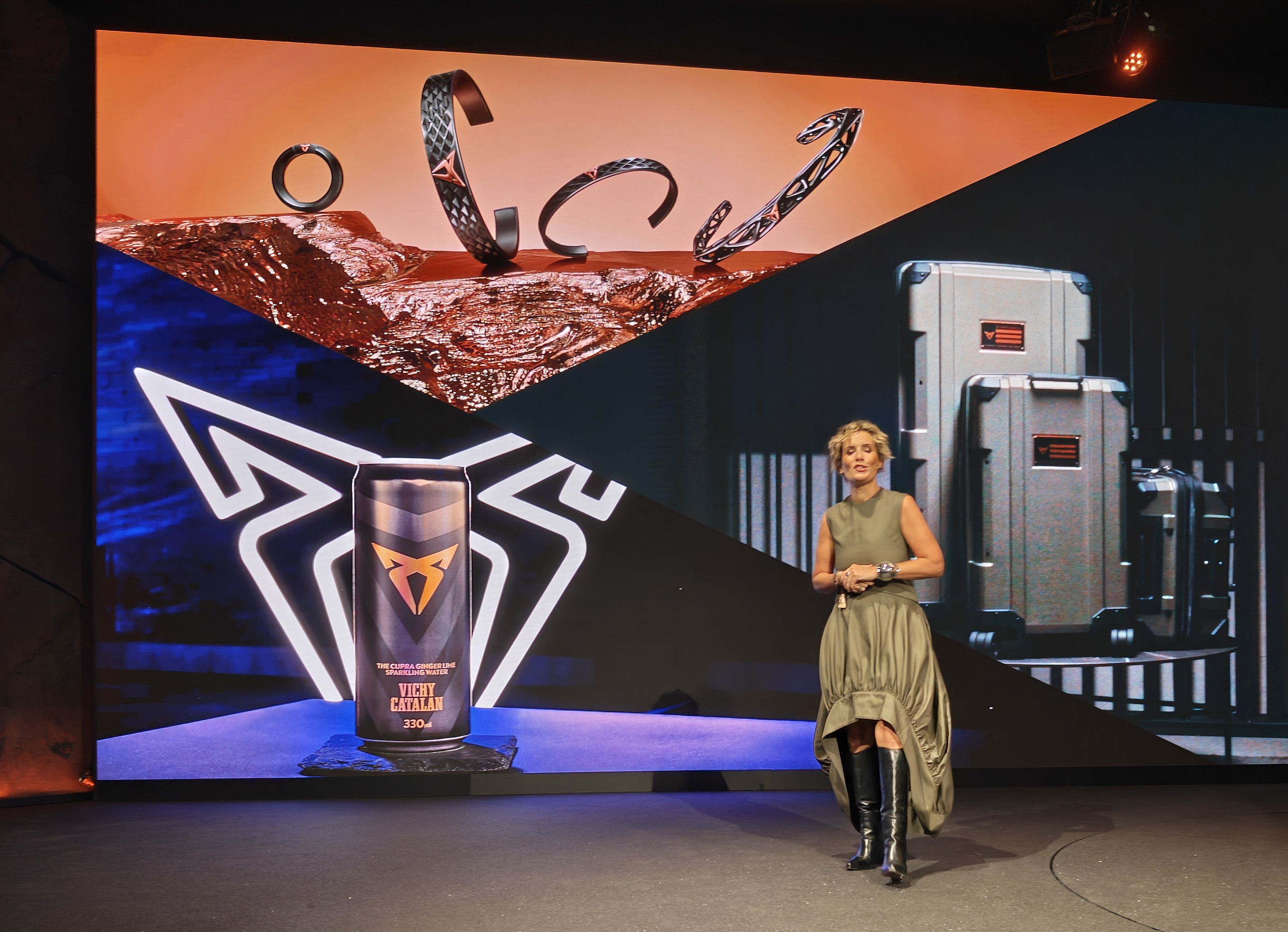
Cupra's Cecilia Taieb announcing the new collaborations in Munich
What Cupra is or isn’t can also be up for grabs. ‘We don’t have a legacy that helps us,’ Taieb says. ‘I can’t look at the past because we don’t have a past. We’re the newcomers in the VW Group.’ While direct synergies are not sought, they’re not avoided either.
The Raval will be the first Cupra model to feature 3D-knitting technology in the interior, in a material that is also deployed in the upcoming Tribe editions of the current production line-up. The idea is to create 3D-knitted sports gear in a future collection. Using processes in car design and manufacturing for products like shoes and suitcases is another way of promoting the materials themselves.
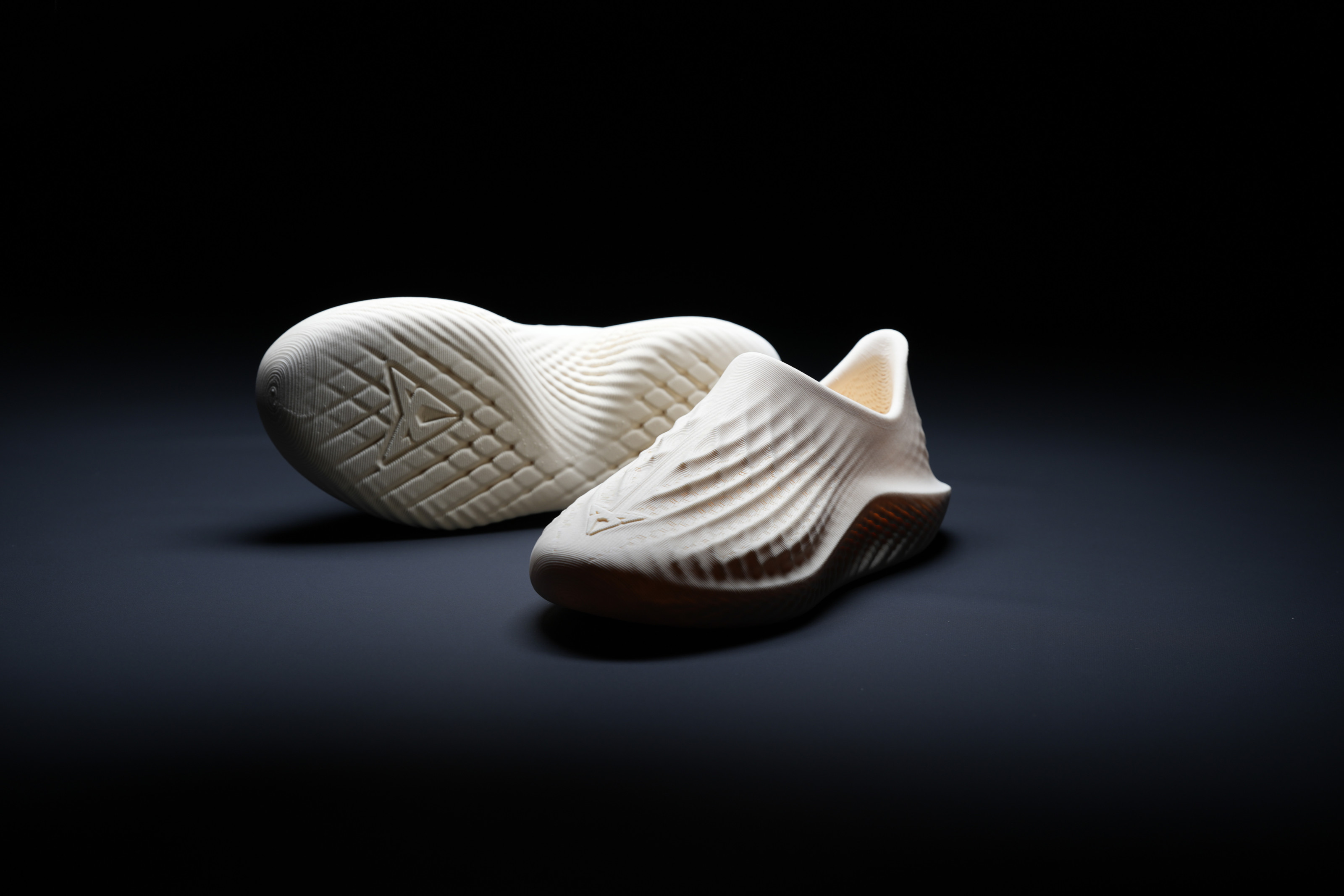
Zellerfeld 3D-printed shoes developed for Cupra
Cupra is nothing if not ambitious. In the seven years since it was founded, in 2018, it has produced seven cars, with the latest, the new Raval EV, given pride of place on the massive Cupra stand erected in the 17th-century Kaiserhof courtyard of the Munich Residenz palace. Despite the camouflage body panels, the crisp lines of the bodywork were clear, setting the brand apart from same-platform siblings from VW and Škoda.
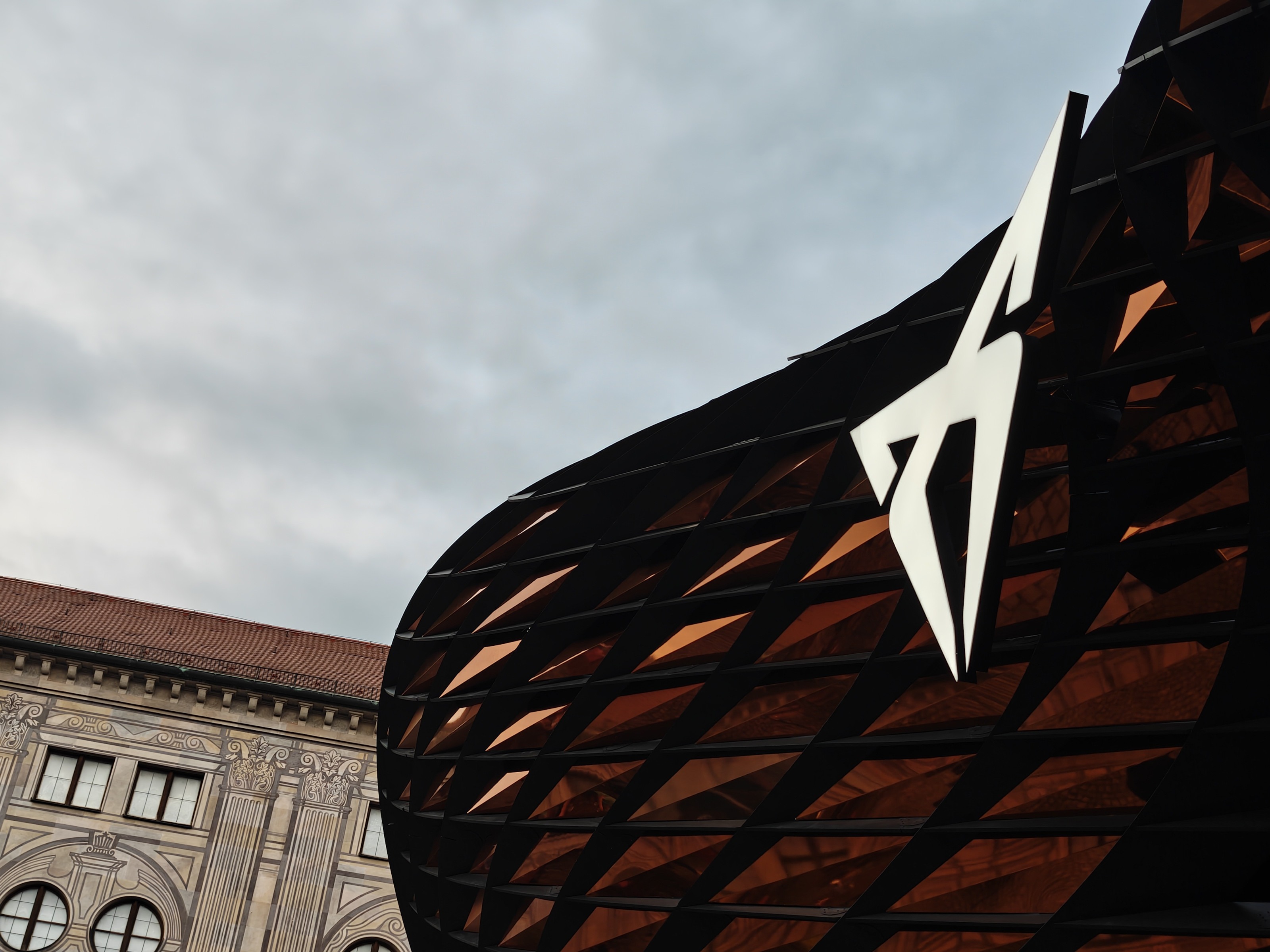
Cupra's pavilion at IAA Mobility 2025
Joining the Tindaya and Raval were a clutch of special ‘Cupra Tribe’ editions of the current core line-up, the Formentor, Leon, Leon Sportstourer, and Terramar. In addition to 3D-knitted textile, the cars feature a new Manganese Matt exterior paint finish, along with bio-based paint on some prominent interior elements. ‘They show that Cupra goes beyond the car,’ Taeib says, pointing out the synergies between colours and materials and the products offered by the House of Cupra. ‘Our clothing range matches the colours of our cars,’ she says, ‘you’ll never see a red T-shirt or a white hoodie.’
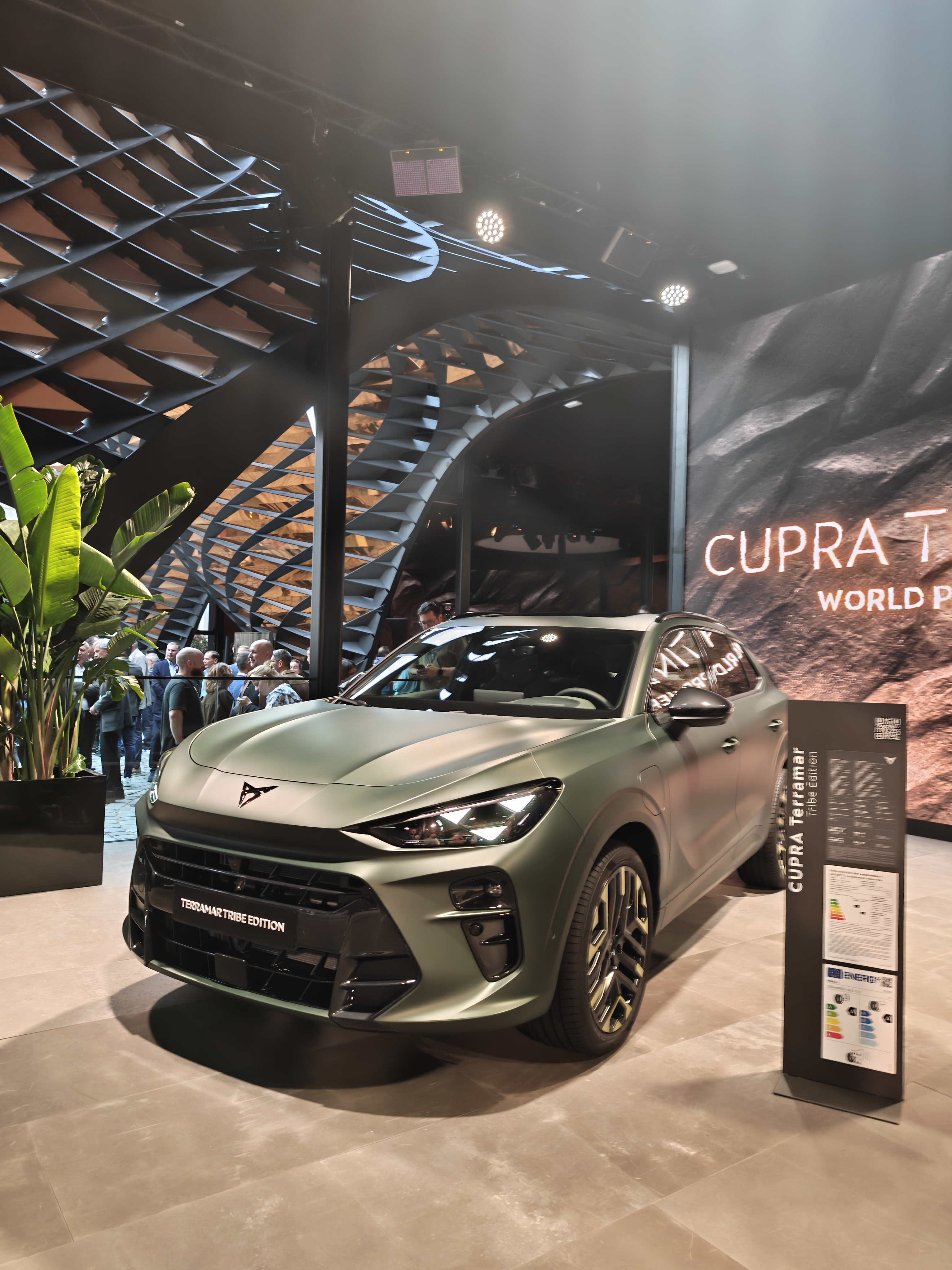
Cupra Terramar Tribe Edition, in the new Manganese Matt paint finish
Surprisingly, Cupra has eschewed easy targets in its marketing. According to Taeib, the brand is not especially family orientated, preferring to focus on a young, urban demographic who still see value and pleasure in driving. As well as sponsoring FC Barcelona, Cupra also puts its name to Padel, the racquet sport. ‘It’s a bit unconventional, urban and young-minded,’ says Taeib, adding that finding the right partners and causes is ‘not about targets. If it fits, it fits – it’s like dating.’
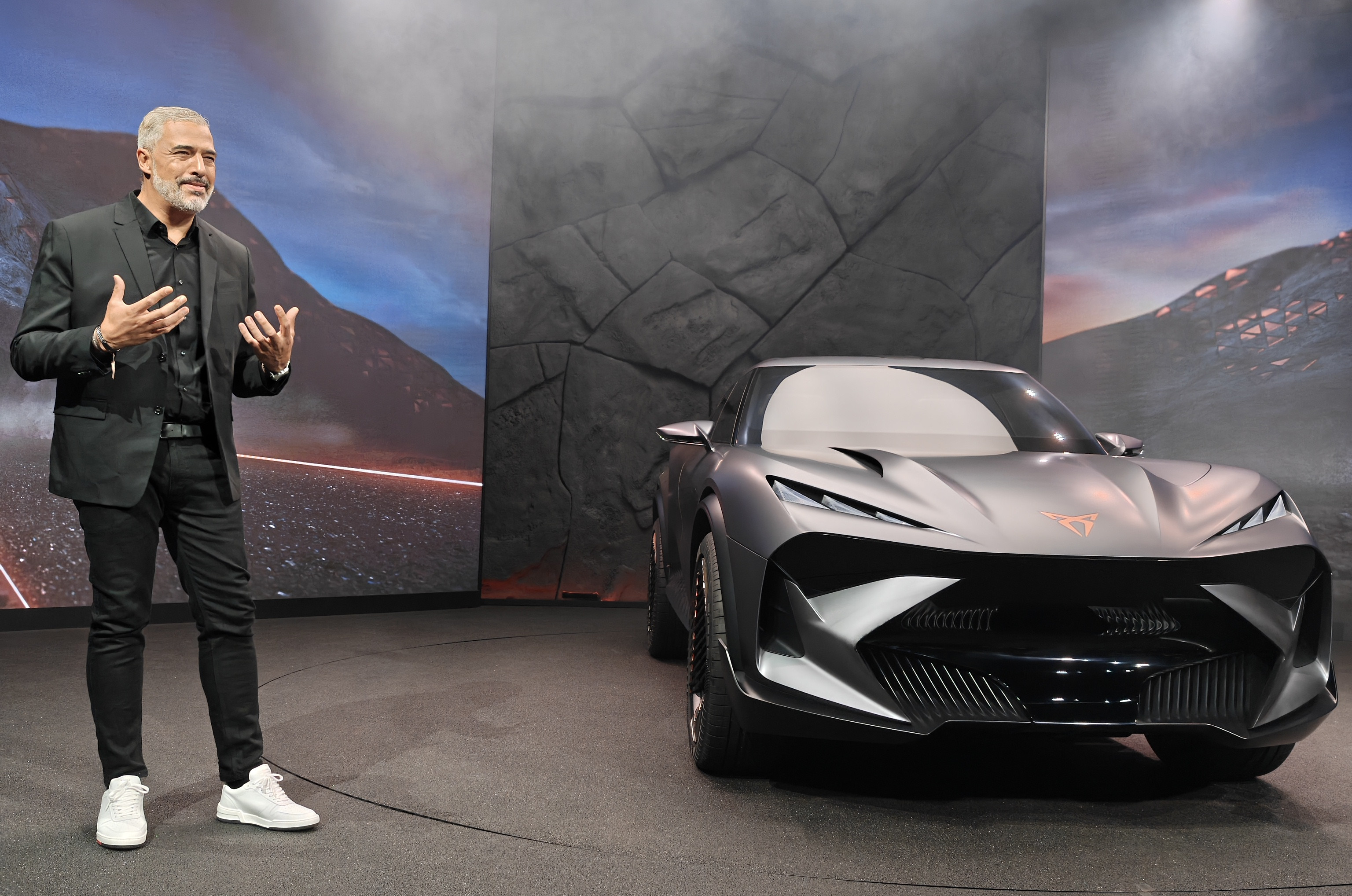
Cupra’s head of design, Jorge Díez, and the Tindaya Concept
The next day, Cupra’s head of design, Jorge Díez is on hand to discuss the direction showcased by the new Tindaya concept. With a name taken from a sacred volcanic mountain on Fuerteventura, the Tindaya is an angular, high-riding crossover.
At 4.72m, the Tindaya is also the largest Cupra to date, nudging itself into the full-size SUV segment. Light, shade, lighting, deep sculpture and material contrasts shape the body, with its thrusting, spiky nose and notched rear wheel arches with a deep cut-out in the flanks, clad in the same material used for the seat backs.
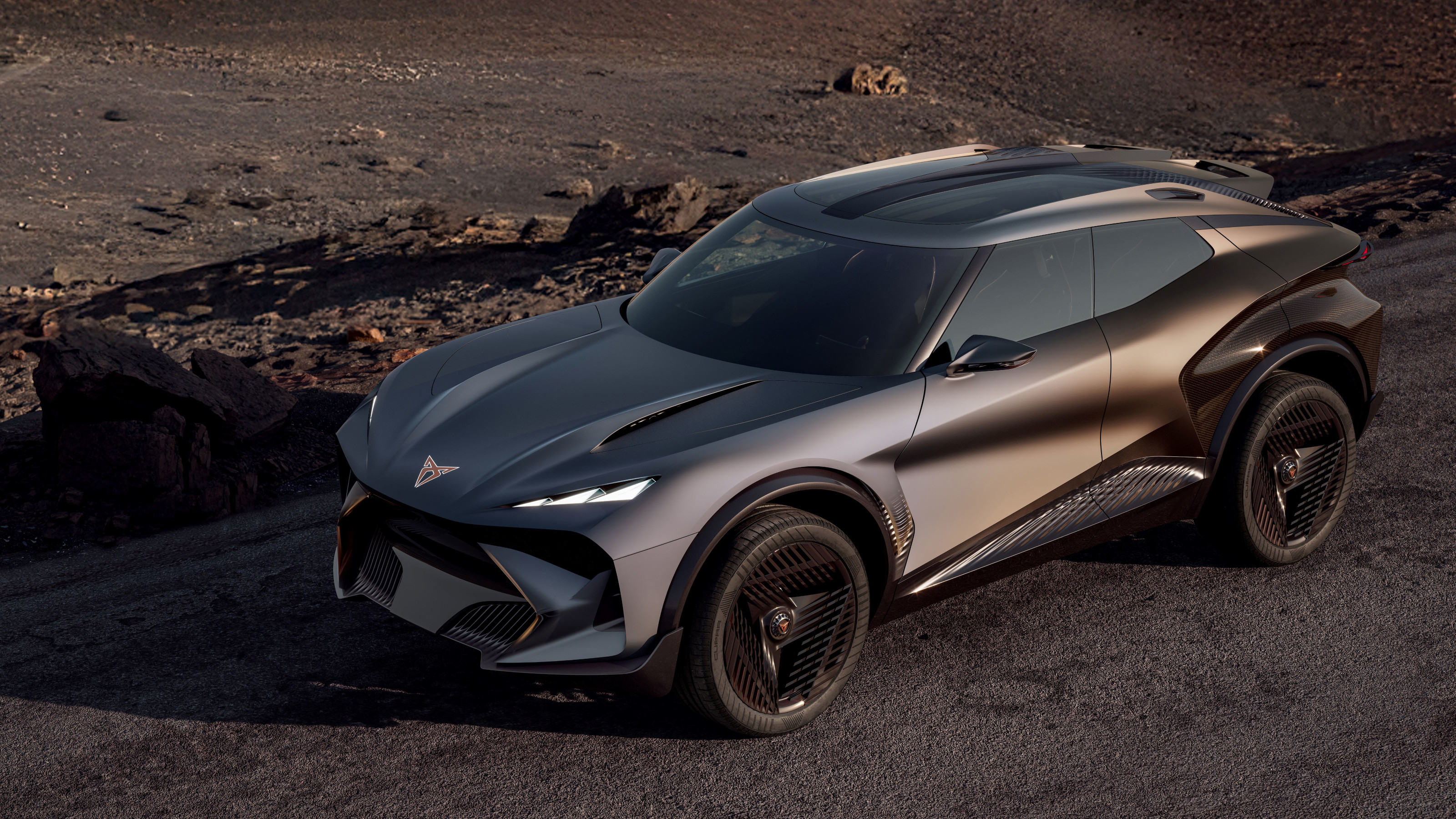
Cupra Tindaya Concept, 2025
There are elements of Lamborghini or even Lotus in the car’s stance and attitude, and it conveys a certain amount of aggression. One person’s aggression is another’s passion, or even emotion, so there’s a consistency of approach to love it/hate it styling. Inside, four bucket seats are cantilevered off a central spine, appearing to float above the floor.
A central jewel feature is used to switch between three driving modes, Immersive, Meta and Rider. The first is driver-focused, while the latter emphasises connectivity with your surroundings and even your contact book. Whizzy animation and dynamic lighting throughout the interior signal your choice. The yoke-style steering wheel is pitched somewhere ‘between gaming and racing’, according to Díez, who points out the 3D-knitted surfaces, neoprene seats and recycled materials throughout the cabin.
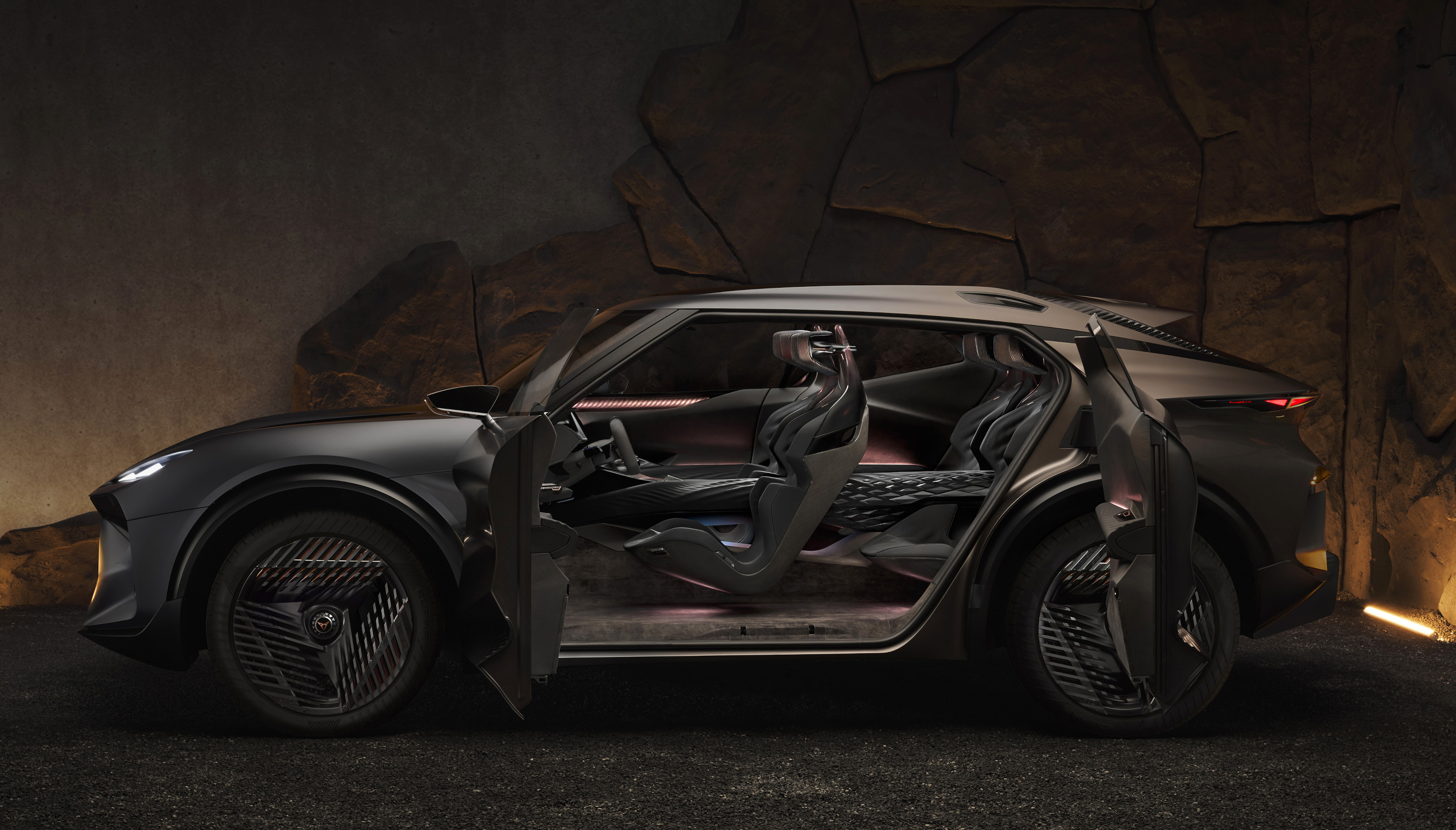
Interior of the Cupra Tindaya Concept, 2025
There’s an organic, slightly trypophobic, surface detailing on the central spine, with raised bumps and blended materials that run the length of the interior. Díez also describes the exterior in naturalistic terms. ‘It’s more like an animal,’ he says of the intersecting surfaces, ‘with twisting muscles.’ Glass elements are painted with a fade that reveals the details underneath them, with Cupra’s signature copper serves as highlights on the edges of forms and even through the lighting.
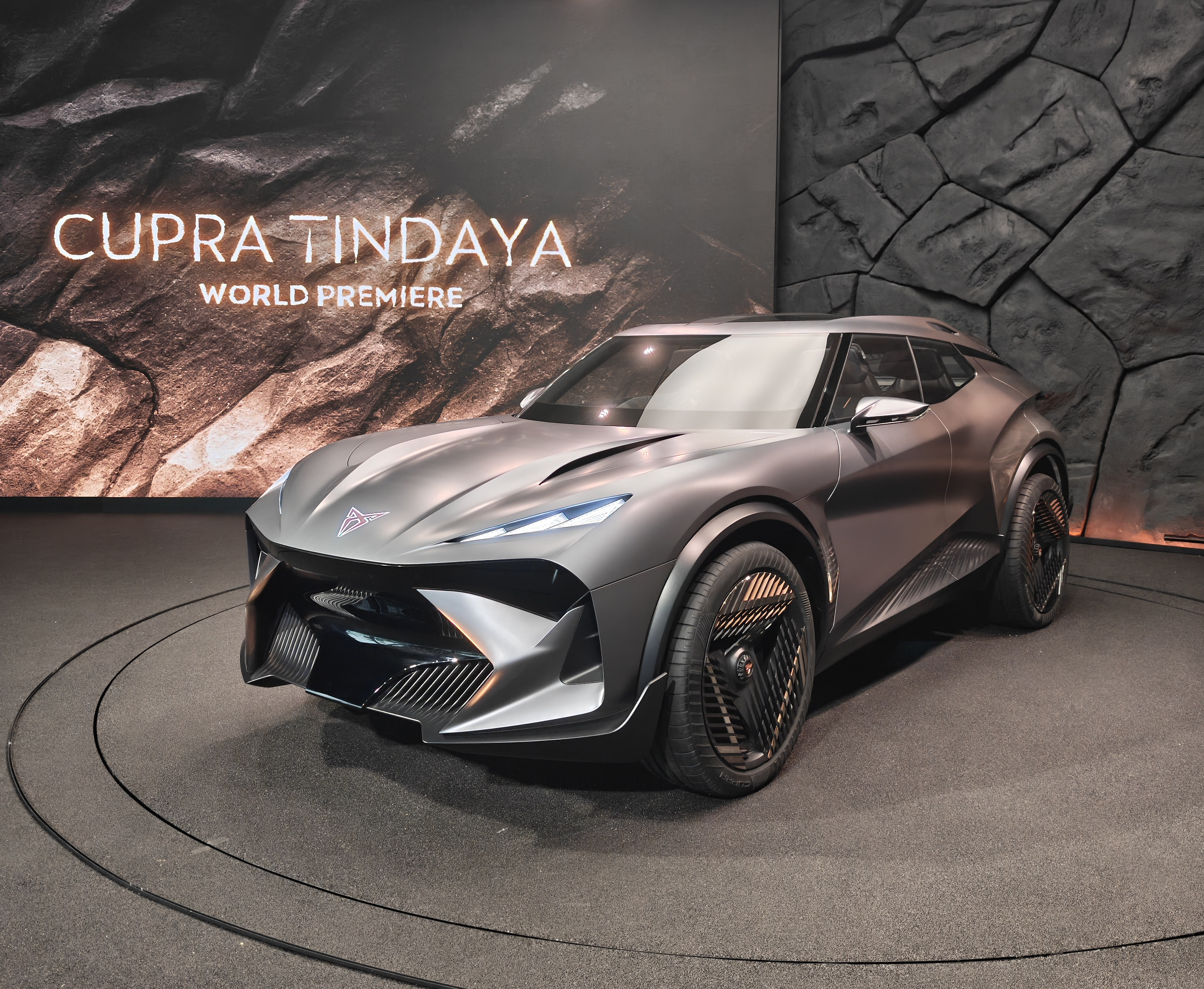
The reveal of the Cupra Tindaya Concept
The latter plays a key role in defining the Tindaya’s identity, especially on start-up. The dark grille beneath the nose is actually a screen, which displays a swirling, fire-like animation when the car is turned on. ‘It’s like the beast is waking up,’ says Díez, as the digital forms transition and mirror the physical LED lights above them. ‘It’s about how we can emphasise emotions,’ Díez continues, ‘we use sound, light, touch, taste and smell – we target all the five senses.’
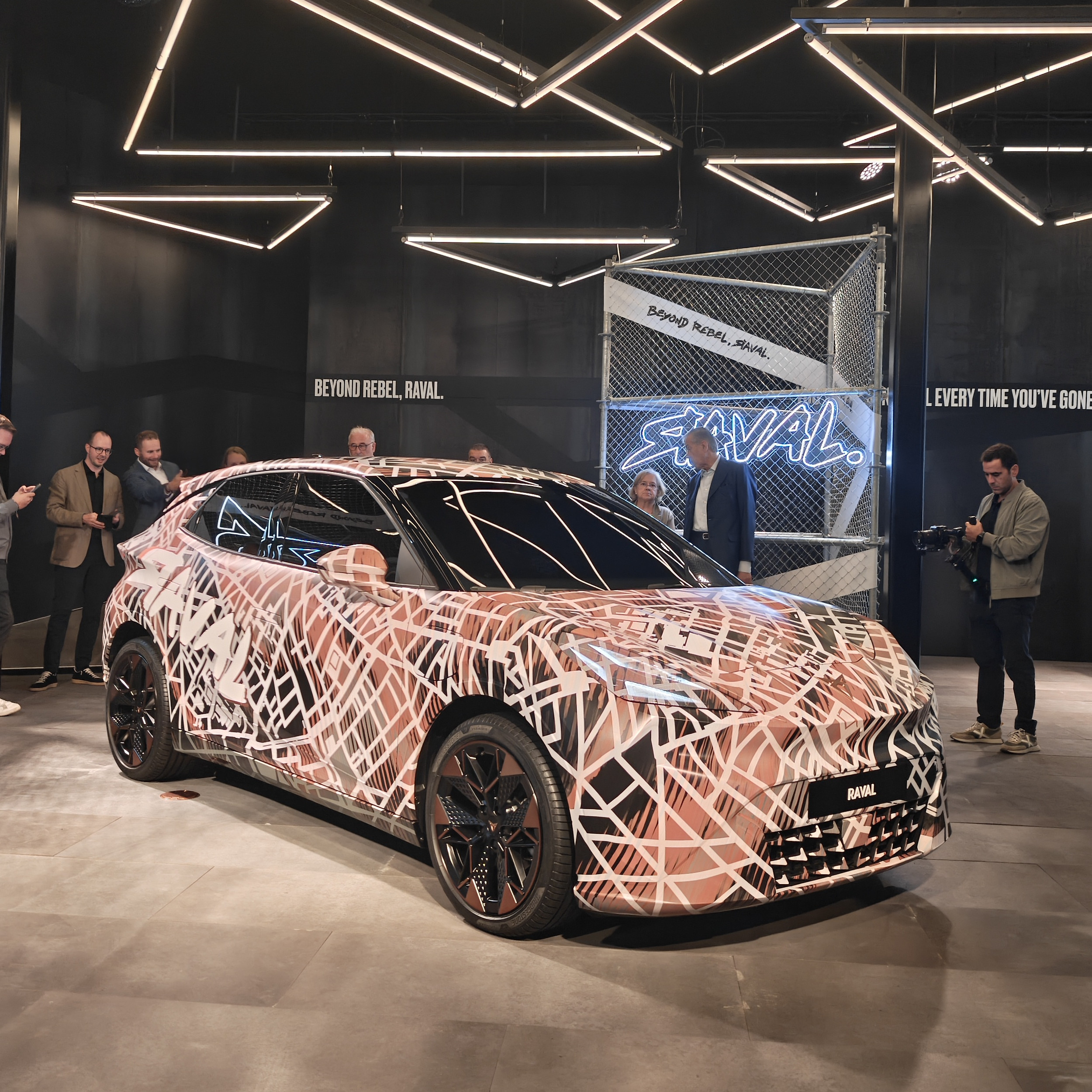
The 2026 Cupra Raval was shown in camouflaged form at IAA Mobility 2025
The Tindaya is the bravest statement of intent from a brand that consistently punches above its weight in terms of ambition and reach. Cupra isn’t afraid to be an outlier – it relishes the ‘rebellious’ label – but as with any commercial concern, it’d still like to be an outlier in more markets, with more customers and a much bigger tribe.
Jonathan Bell has written for Wallpaper* magazine since 1999, covering everything from architecture and transport design to books, tech and graphic design. He is now the magazine’s Transport and Technology Editor. Jonathan has written and edited 15 books, including Concept Car Design, 21st Century House, and The New Modern House. He is also the host of Wallpaper’s first podcast.
-
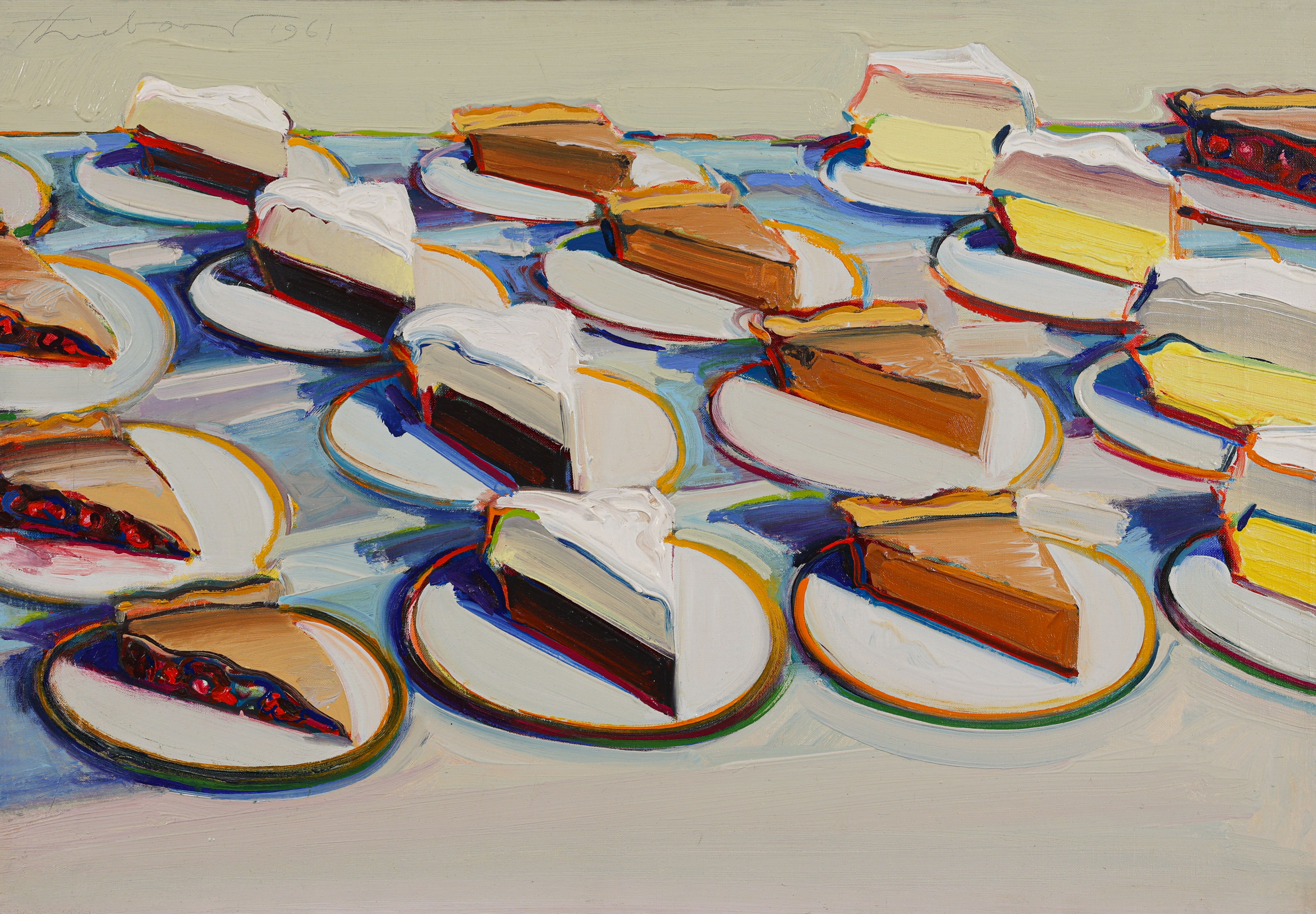 Why are Wayne Thiebaud’s paintings at the Courtauld quite so tempting?
Why are Wayne Thiebaud’s paintings at the Courtauld quite so tempting?The American artist’s thickly painted slices of cake at the Courtauld are some of our favourite artworks seen this year. What makes them so special?
-
 Taiwan’s new ‘museumbrary’ is a paradigm-shifting, cube-shaped cultural hub
Taiwan’s new ‘museumbrary’ is a paradigm-shifting, cube-shaped cultural hubPart museum, part library, the SANAA-designed Taichung Green Museumbrary contains a world of sweeping curves and flowing possibilities, immersed in a natural setting
-
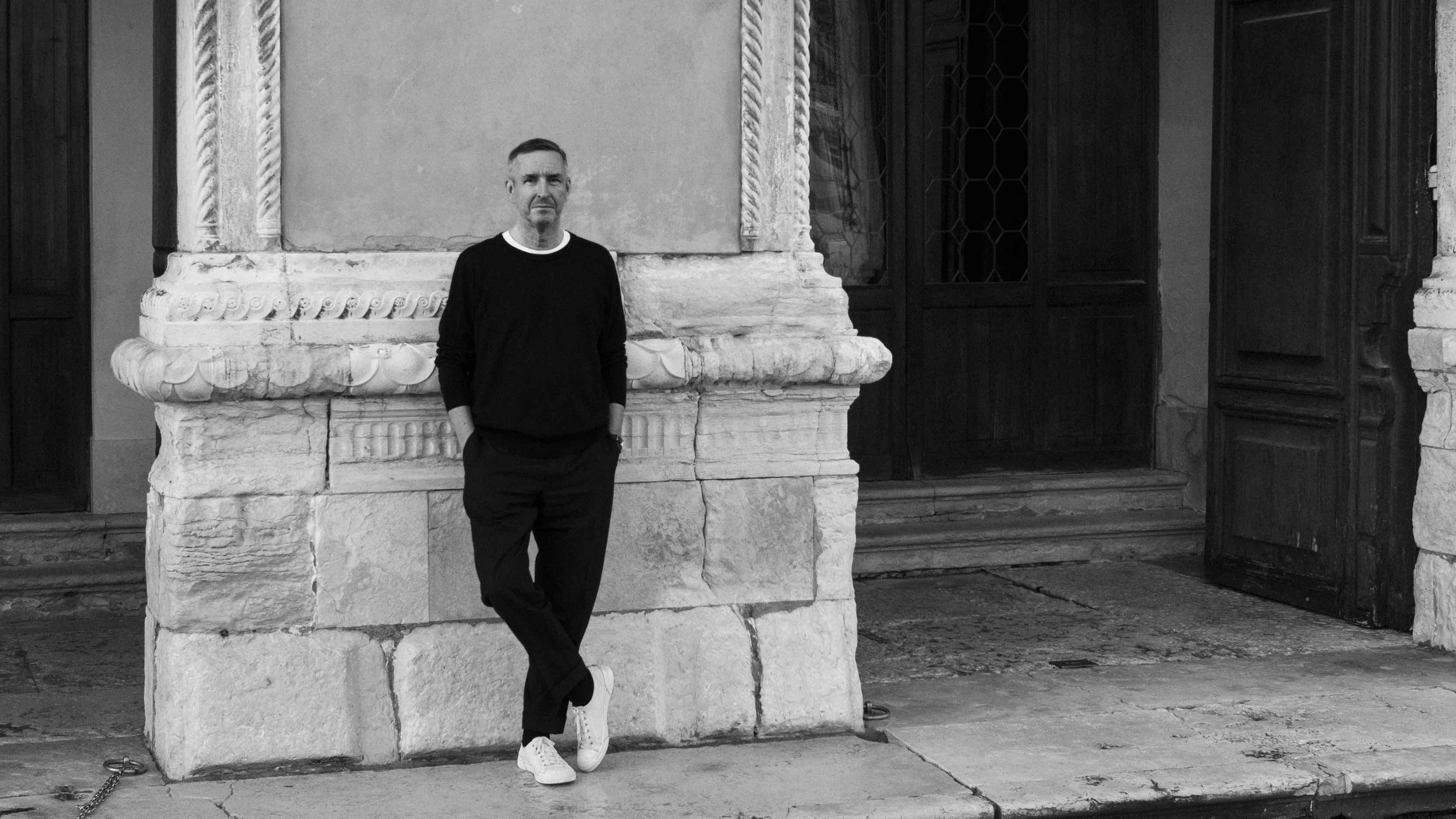 Dries van Noten on why he's building a new home for craft in Venice
Dries van Noten on why he's building a new home for craft in VeniceA year after departing the runway, Dries van Noten unveils his next chapter: the Fondazione Dries Van Noten, a newly announced cultural initiative in Venice celebrating craft in all its forms. Wallpaper meets the designer to find out why he’s not ready to retire.
-
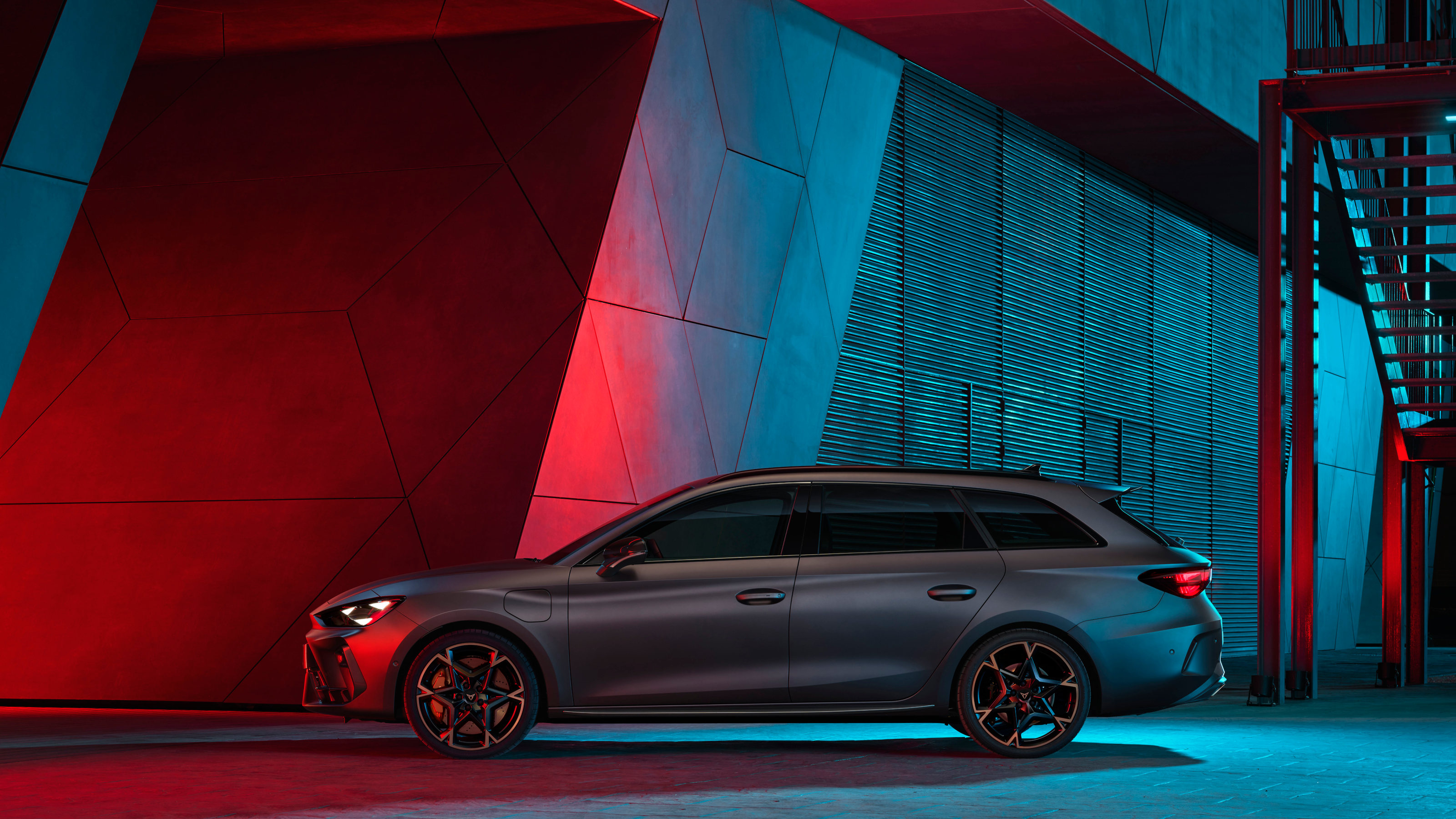 A couple of Cupras: we explore the Spanish brand’s Leon and Ateca models
A couple of Cupras: we explore the Spanish brand’s Leon and Ateca modelsCan the marque’s mainstay models, the Cupra Leon and Ateca go head-to-head with the growing number of all-electric rivals?
-
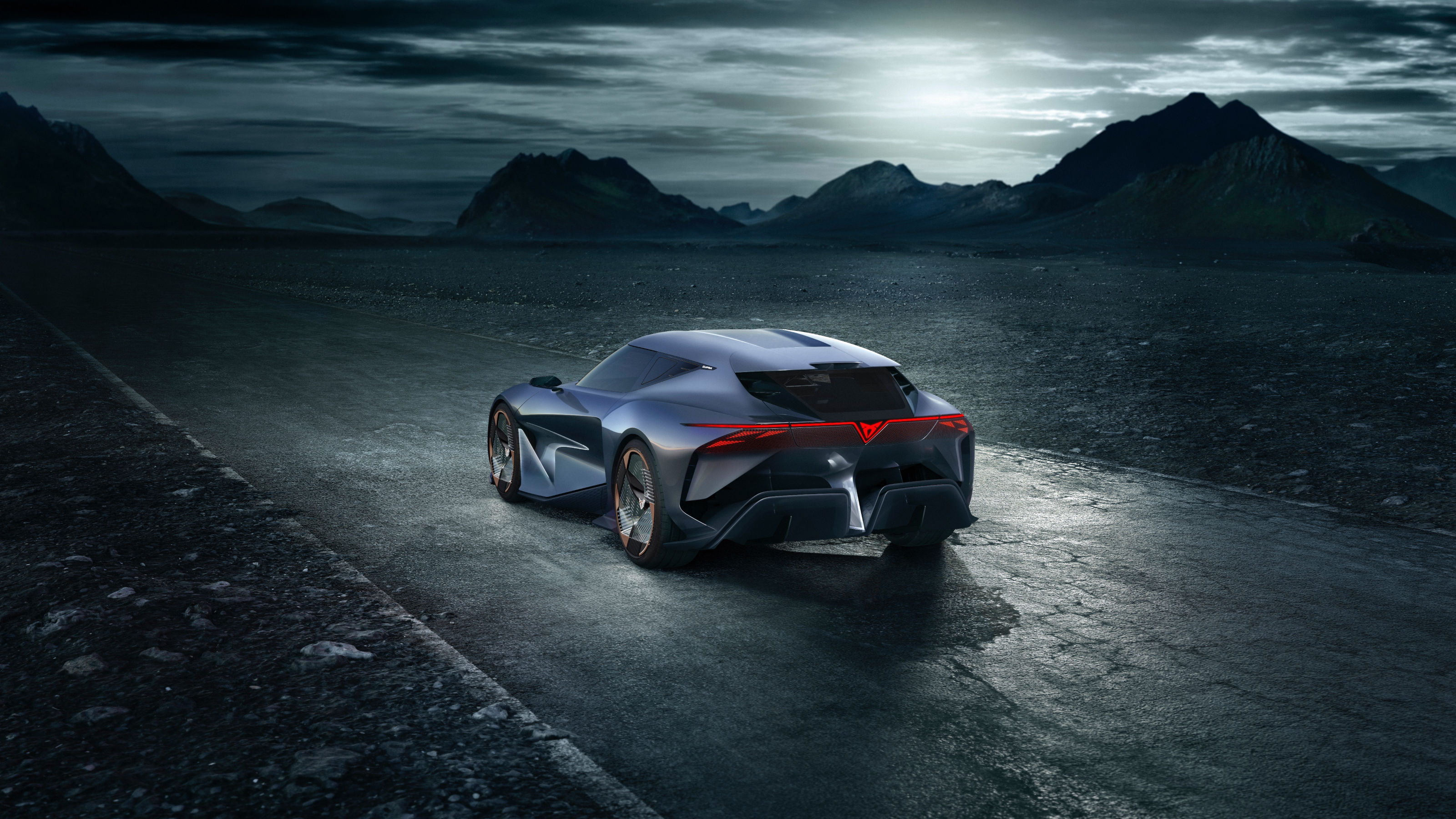 Spain’s Cupra is staking a claim to become the most emotional electric carmaker
Spain’s Cupra is staking a claim to become the most emotional electric carmakerWe spoke to Cupra’s CEO Wayne Griffiths about the art, science and imagination required to create an auto brand from scratch
-
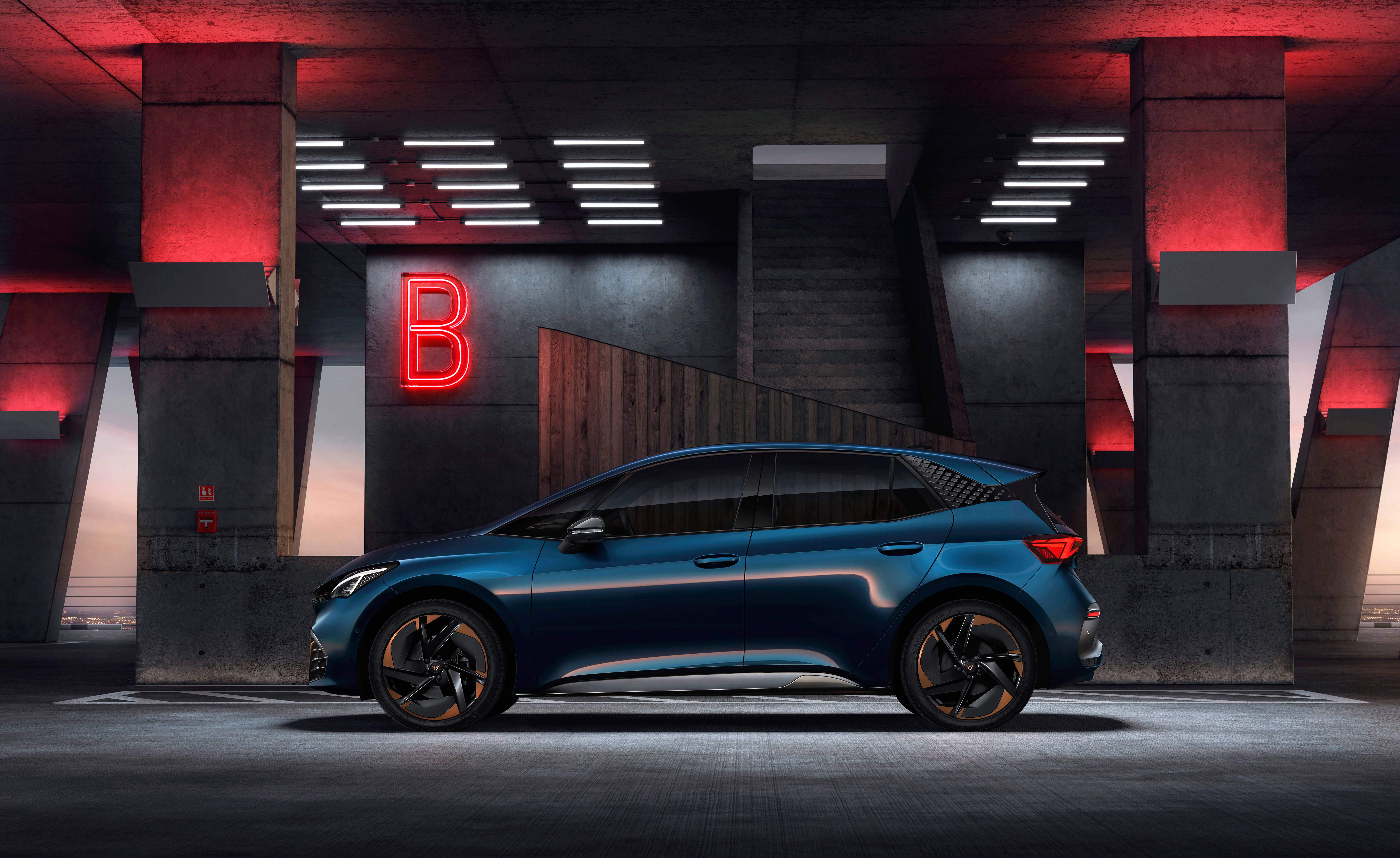 Cupra Born: new arrival is one of the best compact EVs on the market
Cupra Born: new arrival is one of the best compact EVs on the marketThe new Cupra Born embodies characterful design and the spirited zip of electric driving
-
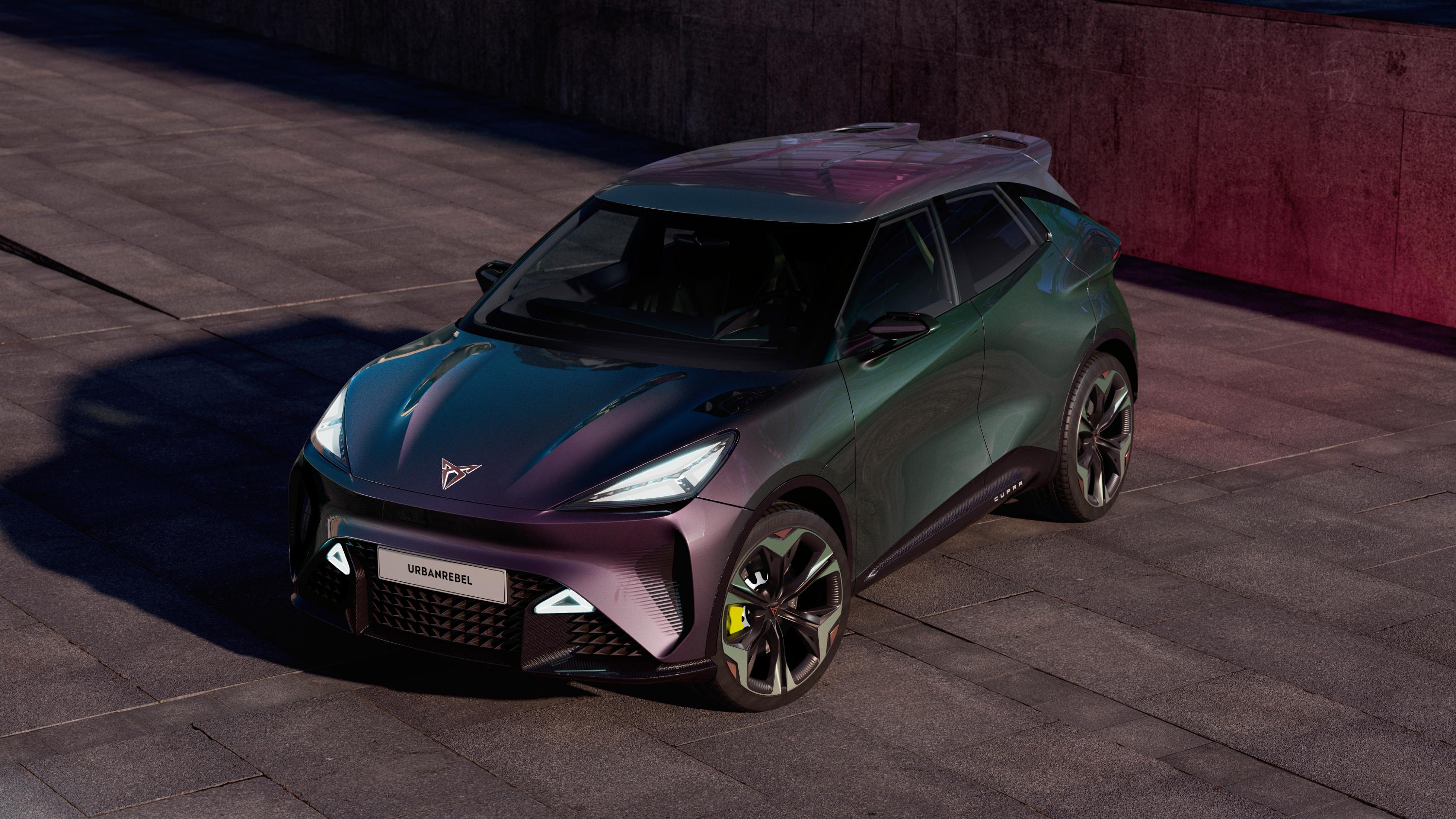 Cupra design director Jorge Díez on the Spanish brand’s future: ‘Cars should express that they’re fun’
Cupra design director Jorge Díez on the Spanish brand’s future: ‘Cars should express that they’re fun’Under Jorge Díez, SEAT and Cupra are forging new, distinctive identities, encapsulating the art and emotions of driving for a new generation
-
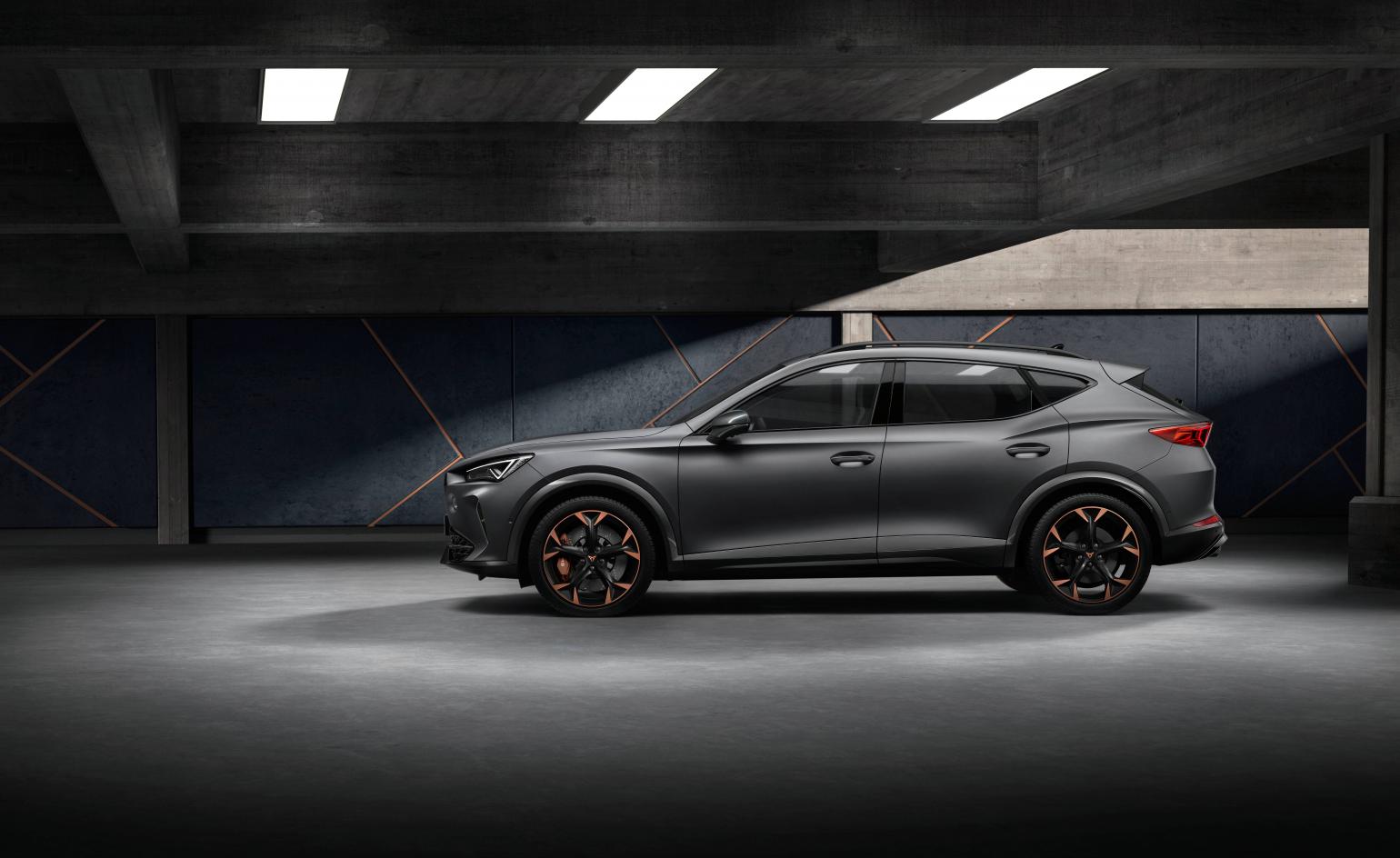 The Cupra Formentor is a dark star for bright minds
The Cupra Formentor is a dark star for bright mindsFor all its moody styling, the Cupra Formentor – from the SEAT spin-off brand – is a compact, swift and fun-to-drive crossover